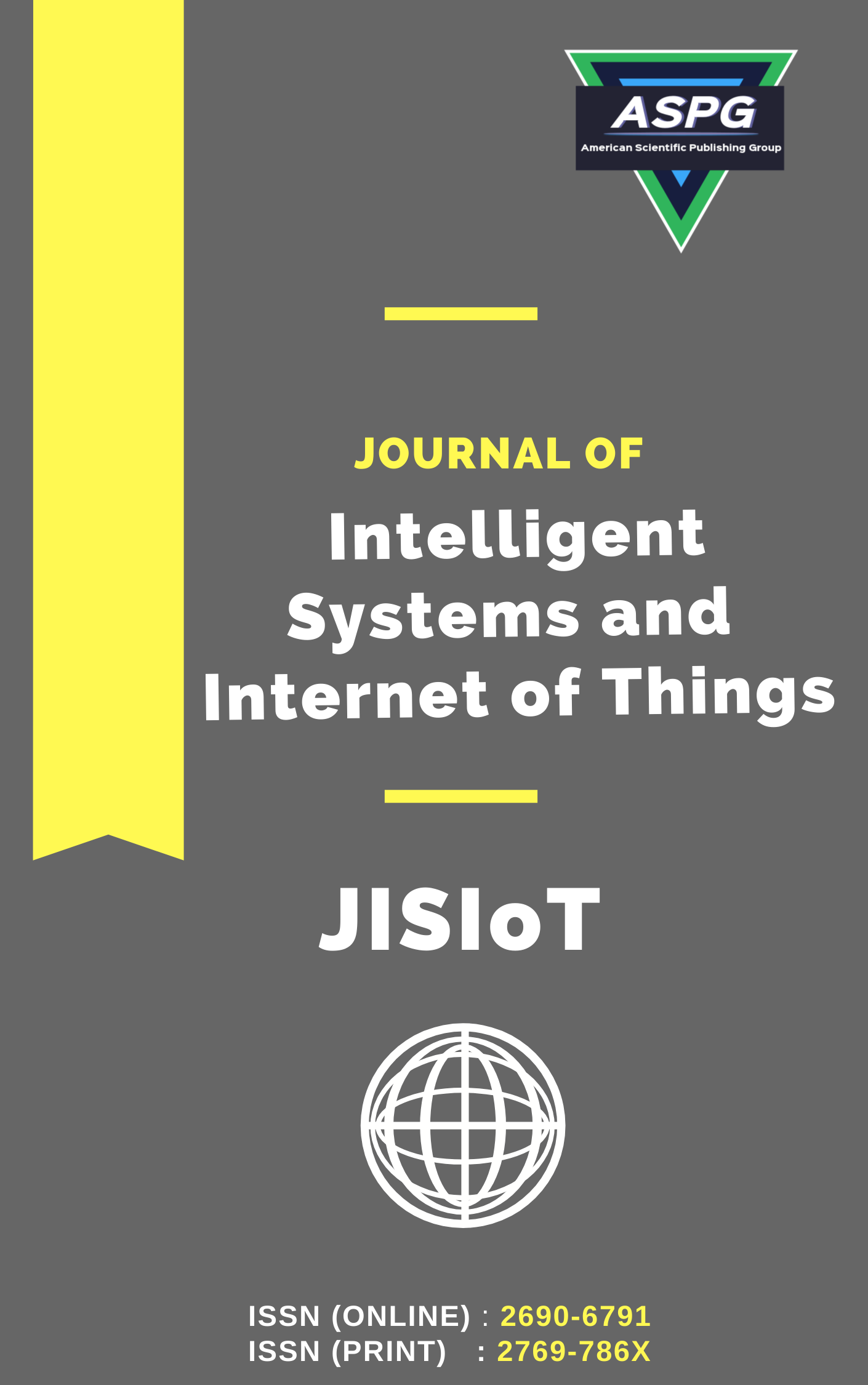

Volume 15 , Issue 2 , PP: 104-120, 2025 | Cite this article as | XML | Html | PDF | Full Length Article
Lama Sameer Khoshaim 1 *
Doi: https://doi.org/10.54216/JISIoT.150208
E-commerce has simplified customers' lives and offered a range of items, but it has also made them vulnerable to frauds. Fake news on e-commerce platforms threatens trust, brand image, and economic stability. Researchers have shown that contemporary Natural Language Processing (NLP) and machine learning can stop bogus news. However, e-commerce companies still struggle to distinguish phony news from real information. Fast knowledge diffusion can cause financial loss, reputation damage, and customer distrust. Thus, e-commerce false news identification requires robust and trustworthy methods. This investigation will successfully recognize and discriminate fake news. High Feature Extraction uses Word2vec and Term Frequency-Inverse Document Frequency (TF-IDF) to extract features. The optimum feature subset is determined via feature selection utilizing the least absolute shrinkage and selector operator (LASSO). The study involves four phases: Extraction, selection, classification, and data processing are the four steps. To remove raw data, data preparation utilizes stemming, lemmatization, and stop word removal. The suggested method averages model outputs to reduce overfitting and improve prediction stability. DIstilBERT with multi-stacked LSTM is tested on WELFake and ranked by F1 score, sensitivity, accuracy, and specificity. The multi-stacked LSTM distiller has 99.77% accuracy, far greater than the others do. We can use it to detect bogus news. It boosts customer confidence and Internet commerce legitimacy by improving accuracy and consistency.
E-Commerce , High Feature Extraction (HFE) , DistilBERT , Multi-stacked LSTM , Least Absolute Shrinkage and Selection Operator (LASSO)
[1] A. Rosário and R. Raimundo, "Consumer marketing strategy and e-commerce in the last decade: A literature review," J. Theor. Appl. Electron. Commerce Res., vol. 16, no. 7, pp. 3003–3024, 2021.
[2] V. Jain, B. Malviya, and S. Arya, "An overview of electronic commerce (e-commerce)," J. Contemp. Issues Bus. Gov., vol. 27, no. 3, pp. 665–670, 2021.
[3] F. D. Soldner, "Combating online consumer fraud and counterfeits: A data science perspective," Ph.D. dissertation, Univ. College London, 2023.
[4] Y. Wu, E. W. T. Ngai, P. Wu, and C. Wu, "Fake online reviews: Literature review, synthesis, and directions for future research," Decis. Support Syst., vol. 132, p. 113280, 2020.
[5] X. Zhang and A. A. Ghorbani, "An overview of online fake news: Characterization, detection, and discussion," Inf. Process. Manag., vol. 57, no. 2, p. 102025, 2020.
[6] A. Anwar, M. Malik, V. Raees, and A. Anwar, "Role of mass media and public health communications in the COVID-19 pandemic," Cureus, vol. 12, no. 9, 2020.
[7] K. E. Pearlson, C. S. Saunders, and D. F. Galletta, Managing and Using Information Systems: A Strategic Approach, 7th ed. Hoboken, NJ, USA: Wiley, 2024.
[8] D. Vese, "Governing fake news: The regulation of social media and the right to freedom of expression in the era of emergency," Eur. J. Risk Regul., vol. 13, no. 3, pp. 477–513, 2022.
[9] I. Virtosu and M. Goian, "Disinformation using artificial intelligence technologies–A key component of Russian hybrid warfare," in Proc. Smart Cities Int. Conf. (SCIC), 2023, vol. 11, pp. 197–222.
[10] A. Peterman et al., Pandemics and Violence Against Women and Children, vol. 528. Washington, DC, USA: Center for Global Development, 2020.
[11] E. Aïmeur, S. Amri, and G. Brassard, "Fake news, disinformation, and misinformation in social media: A review," Soc. Netw. Anal. Min., vol. 13, no. 1, p. 30, 2023.
[12] L. Sun et al., "Fighting false information from propagation process: A survey," ACM Comput. Surv., vol. 55, no. 10, pp. 1–38, 2023.
[13] L. Pinjarkar et al., "An examination of prevalent online scams: Phishing attacks, banking frauds, and e-commerce deceptions," in Proc. 2nd Int. Conf. Adv. Inf. Technol. (ICAIT), 2024, vol. 1, pp. 1–6.
[14] K. S. Yadav and A. K. Keshri, "To secure an e-commerce system using epidemic mathematical modeling with neural network," Concurrency Comput. Pract. Exp., vol. 36, no. 26, p. e8270, 2024.
[15] A. K. Keshri, B. K. Mishra, and B. P. Rukhaiyar, "When rumors create chaos in e-commerce," Chaos Solitons Fractals, vol. 131, p. 109497, 2020.
[16] S. Dakov and A. Malinova, "A survey of e-commerce security threats and solutions," in Proc. CBU Natural Sci. ICT, vol. 2, pp. 1–9, 2021.
[17] H. Desamsetti, "Crime and cybersecurity as advanced persistent threat: A constant e-commerce challenge," Am. J. Trade Policy, vol. 8, no. 3, pp. 239–246, 2021.
[18] R. Gupta, "Cybersecurity threats in e-commerce: Trends and mitigation strategies," J. Adv. Manag. Stud., vol. 1, no. 3, pp. 1–10, 2024.
[19] K. Harshavardan and R. PadmaShani, "Secure practices to prevent cyber attacks in e-commerce sites," in Proc. Int. Conf. Intell. Syst. Commun. IoT Security (ICISCoIS), 2023, pp. 665–670.
[20] J. Li et al., "Large-scale fake click detection for e-commerce recommendation systems," in Proc. IEEE 37th Int. Conf. Data Eng. (ICDE), 2021, pp. 2595–2606.
[21] A. Cidon et al., "High precision detection of business email compromise," in Proc. 28th USENIX Security Symp., 2019, pp. 1291–1307.
[22] X. Liu et al., "Cybersecurity threats: A never-ending challenge for e-commerce," Front. Psychol., vol. 13, p. 927398, 2022.
[23] D. Mitra et al., "Importance of coping with cybersecurity challenges in e-commerce business," in Proc. Int. Interdiscip. Humanitarian Conf. Sustainability (IIHC), 2022, pp. 1596–1601.
[24] R. K. Jamra, B. Anggorojati, D. I. Sensuse, and R. R. Suryono, "Systematic review of issues and solutions for security in e-commerce," in Proc. Int. Conf. Electr. Eng. Informatics (ICELTICs), 2020, pp. 1–5.
[25] M. Alotaibi and A. Mehmood, "A systematic review of e-commerce security threats and solutions: Blockchain and AI perspective," Comput. Security, vol. 115, p. 102632, 2022.